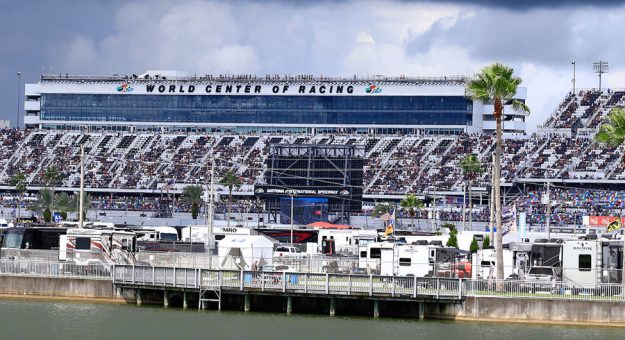WILLMETTE, Ill. — Nearly everything has experienced some sort of shift over the last few years.
The norm is no longer constant and staying the course is not allowed or expected. The sports business has been front and center during this period of transition.
Motorsports was at the starting line and its 2020 season was just underway when the yellow flag was waved because of the COVID-19 pandemic. Industry leaders pivoted and changed course with scheduling for the balance of the season.
Virtual racing events held through iRacing were run and when racing returned to the tracks, travel was kept at a minimum with midweek races run and events held within driving distances of team headquarters. The flexibility shown to make all of this happen was remarkable on many fronts, helping motorsports establish new benchmarks on and off the track.
The economic model of motorsports has been relatively unchanged through the years. Each stakeholder had dual functions — interact with each other and maintain its individual position.
Tracks hosted races, sold tickets and concessions. Teams sold sponsorships, fielded the cars and collected winnings. Sanctioning bodies provided the show and officiated the competition. Media broadcast the races, paid media rights and sold advertising.
Disruption led to opportunity with the traditional sports industry economic model.
International Speedway Corp. merged with NASCAR, Speedway Motorsports bought Dover Motorsports and Penske Entertainment Corp. bought IndyCar and the Indianapolis Motor Speedway.
The Race Team Alliance is well established and has a solid membership base. There are new owners entering the NASCAR Cup Series, winning races and paying increasing prices for team charters. The next round of negotiations for broadcast rights is underway. Each stakeholder has hired consultants to assist with the process.
This may result in a new equation for the revenue pool that would provide stability and create considerable sales potential for networks, teams, tracks and sponsors. If needs are not met, new entities could enter. In certain sports, leagues have been formed offering higher financial compensation than long-existing organizations.
The dominance of traditional broadcast partners is waning. Established players are becoming more selective about the sports they cover, choosing to target specific sectors over a broad-brush approach.
Technology entities are entering the fray — bidding on smaller packages for content to offer on their respective platforms. Direct-to-consumer packages have arrived as well, with the ability to stream on multiple devices often considered the norm.
Finance is also part of this changing landscape and momentum is well underway. Entities are backed by private equity and institutional capital. They will continue to monetize the sport to create value for their investors.
Technology is the primary resource. It is creating efficiency and generating revenue. Data about performance is harnessed. Analytics are behind the importance of digital opportunities, including NIL, NFT and sports betting.
Fans are behind this change and they are demanding innovation. They want a simple, personalized experience. If a company can deliver that, customers have proven they will pay the price.
Ease and simplicity in a digital world are frequently a logistical challenge. The tradition of watching the race each week on the same channel at the same time is no longer the norm. Instead, bundled packages across multiple platforms with numerous viewing options is becoming the standard.
How will motorsports handle these challenges? The answer is pretty well.
Adjusting under changing race conditions is the norm. The pace will quicken, solutions will be multivariable and choosing the right technology and partner will be critical to success.
